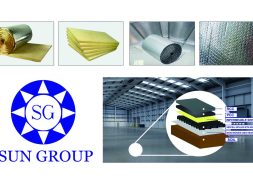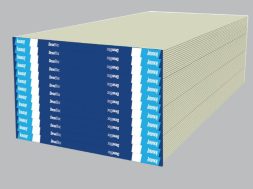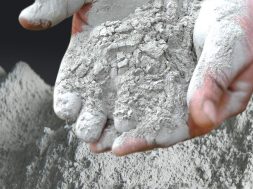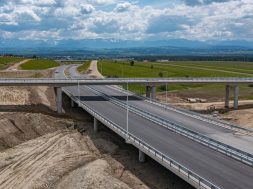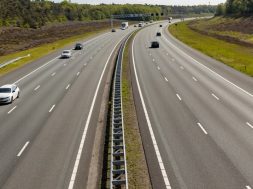Green Plumbing [Mar 2012]
‘Plumb-Acharya’ Subhash Deshpande talks about the development in plumbing technology and highlights the importance of standardising plumbing in India
Alarmingly the water usage per person is increasing. The main reason is the increase in the general awareness about human health, cleanliness and safety. The water consumption is also increasing due to high standard of living, more number of toilets per apartment and increase in the average size of apartment. Other reasons are high pressure, high water consuming water fixtures that are emerging in the market. Though the cost is high, they are becoming more and more popular.
In order to make professional practice responsible, benchmarking in plumbing should be adopted as an accepted strategy. A water-efficient labelling system for plumbing products is one such approach recognised universally to achieve the objective of water conservation in domestic use. Not only will this initiative assist the National Water Mission of Government of India’s 20 per cent efficiency target, but will fall in line with other successful water labelling schemes from around the world.
A few years back, Bureau of Energy Efficiency set path in labelling of energy efficient products. The energy consuming products were tested for energy consumption and conservation, certified and labelled. A rating system for the energy conserving products was established. It was simple for common man to understand and soon became very popular. Huge campaigns on TV and newspapers, road hoardings, national level seminars etc. were some means to create awareness. It’s time now to popularise the blue stars!
More the blue stars, more the water conservation!
Plumbing CodesUniform Plumbing Code-IndiaThe Uniform Plumbing Code-India (UPC-I) is a product of the joint effort of the Indian Plumbing Association (IPA) and International Association of Plumbing & Mechanical Officials (IAPMO), with world headquarters in USA.
The first edition of the Uniform Plumbing Code (UPC) in North America was officially adopted by IAPMO in 1945, based on the recommendations of the committee comprising of plumbing inspectors, master and journeyman plumbers, sanitary and mechanical engineers, public utility companies and the plumbing industry. Since then, over past 80 years, the code has gone through consensus development, mitigating the disorder in the industry as a result of widely divergent plumbing practices and the use of many different and often conflicting plumbing codes.
The rapid development of the Indian construction industry in the past decade required the plumbing industry to keep pace with modern plumbing technology. For this, the codes, standards and practices required improvements to be comparable to international standards. The basic document for plumbing, which can be considered as uniform throughout India, is one part in the National Building Code of the Bureau of Indian Standards, implementation of which is voluntary, until adopted by local statutory bodies.With intent to incorporate and implement the latest technology and systems for the protection of public health and hygiene and bring uniformity to the installation of plumbing works throughout the country, IPA has ventured into the preparation of a uniform code, applicable all over India.
The modified UPC-I has kept all basic principles of the original UPC intact but edited to suit the Indian laws, conditions and accepted good engineering practices. The UPC-I has been designed to provide a lucid, comprehensive technical reference to the citizens of India for safe plumbing practices and at the same time allowing latitude for innovation and introduction of new technology.
The UPC-I has been prepared by the Technical Committee comprising of some of the eminent consultants, project managers, contractors and manufacturers in the country, specially formed for this purpose by the IPA. The UPC-I was first published in 2008 and it is IPA’s intention to revise, update and re-publish this document at regular intervals in the future. The 2011 UPC-I is based on the 2009 version of the Uniform Plumbing Code.
Green Plumbing Code Supplement-IndiaIAPMO created the ‘Committee for the Awareness and Understanding of a Sustainable Environment’ (CAUSE) and the Green Technical Committee (GTC). The GTC was charged with the development of the IAPMO’s Green Plumbing and Mechanical Code Supplement (GPMCS) in an effort to fulfil the IAPMO’s call for a reduction in energy and water consumption in the Uniform Codes.
IPA volunteered to review IAPMO’s Green Plumbing and Mechanical Code Supplement (GPMCS), modify it to suit Indian conditions, practices and laws and adapt it as ‘Green Plumbing Code Supplement-India’ (GPCS-I) to the Uniform Plumbing Code-India (UPC-I). The 2010 Green Plumbing Code Supplement-India is a supplement to UPC-I and ITM.
Green Plumbing Code Supplement-India is the most comprehensive document on sustainable plumbing systems in maintaining the high standards for protecting public health and safety. This document is a model code for jurisdictions implementing green guidelines.
Water Efficient Products-India This publication for Water Efficient Products-India (WEP-I) is also the result of the joint effort of the Indian Plumbing Association (IPA) and the International Association of Plumbing & Mechanical Officials (IAPMO-India). The Code references in this publication are taken from the UPC-I and GPCS-I.
Prior to this, no rating system existed in India for water efficient products. The increasing need for defining water efficient products in India prompted IPA to develop such a document in collaboration with IAPMO-India. The use of WEP-I is intended to provide uniformity in the performance of products.
Development of the systemWEP-I is a Rating System for Sustainable Plumbing in India. The 2011 Water Efficient Products-India (WEP-I) is a set of recommendations to all those who are involved in the design, engineering, manufacturing, selection, installation and maintenance of water efficient plumbing products for domestic and commercial applications in India. On the date of publication of 2011 WEP-I, the provisions in this Code are not mandatory. The use of WEP-I is intended to encourage use of water efficient products, to incorporate and implement the latest technology and systems and provide uniformity in the performance of products.
Why a rating system for water efficient products?Fresh water is a precious but finite resource, conservation of which calls for urgent and immediate measures. Increasing population, high rate of urbanisation and associated changes in lifestyles, etc. are all contributing towards rising water demand.
Consumption of water in domestic and commercial building applications constitutes a sizeable proportion of the total water demand. Therefore, there is a need to look for opportunities for the conservation of water within this user group, wherein the Plumbing fraternity has a significant role to perform.
The demand on this scarce resource could be addressed through a two-pronged approach, namely, usage of high efficiency plumbing fixtures and low flow faucets and by usage of alternative sources of water (other than potable water) for applications such as flushing of water closets and urinals, landscape irrigation, car wash and makeup water for air-conditioning. It is imperative that efficient plumbing design practices and installation procedures are adopted which evolve out of robust codes and standards as well as appropriate scientific principles.
In order to make professional practice responsible, benchmarking should be adopted as an accepted strategy. Water-efficient labelling system for plumbing fixtures and fittings is one such approach recognised universally to achieve the objective of water, and energy, conservation in urban domestic and commercial use. This document delineates the approach for Water Efficient Products-India (WEP-I).
Rating Systems in other countries:A few countries across the world have already established standards for labelling and rating of water efficient plumbing fixtures, fittings and appliances with supportive legislations such as Water Efficiency Labelling System (WELS) in Australia, WaterSense in USA, Water Efficiency Labelling Scheme (WELS) in Singapore, ANQIPS labelling system in Portugal and WaterWise in UK.
WEP-I will seek to:• Provide credible information on water-efficient products and practices• Raise awareness about the importance of water efficiency and recommend water-efficient products• Aid consumers to make an informed choice of products that conserve water.Plumbing Fixtures considered for labellingWater Closets: Water closets commonly used in India can be classified into three different types: European Water Closet, Combination Water Closet, Asian/Indian Water Closet (Squatting Pan).
The flushing devices to be used in combination with the above fixtures could either be a cistern (coupled or separate) or a flushometer, commonly known as flush valve in India.
In the case of European water closets, water efficient toilet suites are designed with a coupled cistern and integral trap to achieve effective flush using reduced volume of water per flush. However, in the case of the Asian (Indian) or combination closet, water reduction is presently dependent on use of efficient flushing mechanism (cistern or flushometer).
The pan and the trap need to be designed appropriately with further research to ensure efficient functioning with reduced water volumes per flush.
The rating system for water closets is based on the volume water used for each effective flush. Any water closet consuming more than 6 litres per flush do not qualify.
Push cocks cannot be accepted as flushing devices and hence do not qualify for ratings since a push cock is no more than an inline stop cock. Outlet of the push cock is connected direct to a water closet pan. If the water supply system runs dry, back-siphonage can occur into the water distribution system contaminating the same. As a preventive measure, a well designed flushing device shall have an atmospheric vacuum breaker at the outlet to qualify for rating.
It is preferred that the flushing devices used with the European water closets are matched units from the same manufacturer. In the event, combination products of different manufacturers are to be submitted for rating, appropriate undertaking of compatibility shall be produced to the satisfaction of the certification agency.
Certain projects mandate use of reclaimed water for flushing of water closets. Whilst these projects achieve the goal of water conservation, they are not being discussed here since the rating systems under consideration are specific to products alone. In such situations, since dual water supply piping is mandatory, devices to prevent backflow/back-siphonage such as vacuum breakers may be superfluous. In the absence of monitoring mechanism from the authorities on the quality of reclaimed water, it may be prudent to use dual-flush flushometers in lieu of cisterns, since the latter could involve the danger of large volume of stagnant microbially-infected water in living spaces.
Shower Heads/Hand-held Showers: Any shower head that provides the flow of more than 9.5 litres per minute do not qualify for rating.
Multiple showerheads / Multi-jet showers serving a single user shall not have a cumulative total flow exceeding the above flow-rates. (Multi-jet shower units cumulatively consuming a volume of water exceeding the limits mentioned in 3.3.1 are not considered as water conserving installations).
Flow rate of “rain showers” or “massage showers” shall be as specified for normal showerheads and therefore no separate rating system is called for.
Other fixtures: Bath tubs / whirlpools consume large volume of water per usage and therefore are not considered recommended fixtures in water- conserving installations. However, if bath tubs are preferred in an installation, the flow rate of the tub-filler is irrelevant since the time required to fill the tub can only be prolonged by use of a low-flow faucet and therefore not considered in the rating system.
The water closets and showers account for 60 per cent of domestic water consumption and therefore are covered here in detail. Other fixtures considered for rating are urinals, faucets (public and private use), ablution faucets, kitchen sinks, domestic dish washers and clothes washers.
RememberFlushometers without atmospheric vacuum breakers shall not qualify for rating. Automatic flushing cisterns for urinals are prohibited and shall not be considered for rating.
Trough urinals and urinals with an invisible seal are prohibited and will not qualify for rating. A rating system for non-water urinals is not included in this document due to the apprehensions among plumbing professionals on the possible adverse effects.
Multi-jet shower units, rain showers or massage showers cumulatively consuming a volume of water exceeding the limits specified are not considered as water conserving installations.
Metered faucets shall be used on lavatory basins (washbasins) in public toilets. Volume of water in these faucets is pre-set per usage/cycle. The other faucets (continuous flow) are generally used in residential installations where flow rates are defined as liters per minute. Flow-rates mentioned for faucets are not applicable for dental units. It is important that handheld ablution spray units are always provided with a backflow prevention device to qualify for rating.
In case of dish washers and clothes washers more study is required with respect to variables such as quantity of water used for full/half load, temperature of water supplied, dishes with or without pre-rinsing, types/quality of clothes being washed and type of detergent used.
Flow-rates prescribed are not applicable for emergency showers or emergency eye-wash stations as high flow rates are required to perform the emergency act. Similarly, a bedpan sink is exempted from the rating system as its function is to maintain the sanitary condition at the ‘dirty utility area’ which may call for higher flow rates.
Other fixtures, fittings and appliances such as water cooler, water heater, receptor, floor trap do not have any relevance to the flow rates, and therefore are exempted from this rating system.
QualificationFlow rates of various fixtures indicated above are at a working pressure of 5.5 bar. The maximum and minimum working pressures recommended by the UPC-I are 5.5 bar and 0.5 bar (installations with flushing cisterns) / 1.0 bar (installations with flush valves) respectively. Only those plumbing fixtures, fittings and appliances shall be considered for the rating system that meet:• The minimum requirements as stated in UPC-I and approved by corresponding Indian Standard or other international standards• The requirement of labelling on products/models• Meet the performance requirement while ensuring safety and health aspects. For example, while the performance of water closet and urinal requires that the solids/liquid be flushed through the trap and clean the bowl; the performance requirements of shower includes the spray force and coverage.
ImplementationEffective implementation of the WEP-I initiative will require active participation of all the stakeholders from the plumbing industry including consultants, contractors and manufacturers apart from the monitoring agencies designated by the Government.
Appropriate legislation will need to be enacted with guidelines to be followed by all concerned in the industry. The programme may have to be recommendatory in nature during the early stages; to be made mandatory and enforced by law in due course.
Approved laboratories for testing will need to be identified to certify compliance of the products to the guidelines laid down by the government from time to time.
As technologies evolve across the globe continually, these guidelines will need to remain dynamic subject to revisions as and when necessary through an institutional framework for monitoring the effectiveness and identify need for such revisions.
Being the sole representative body of all the stakeholders of the Indian Plumbing Industry, IPA offers to take the lead in this initiative towards the task of creating awareness. IPA’s partner – IAPMO, is recognized worldwide as an approved agency for testing and certification of plumbing products including the “WaterSense” programme of the USA.
AuthorThe author is Director Plumbing, International Association of Plumbing and Mechanical Officials-India (IAPMO-India) and propagates Plumbing Codes and code based Plumbing Education all over India, with the support from IPA. Since joining IAPMO, Subhash Deshpande has been instrumental in developing and implementing various plumbing education and training courses in India for Apprentice Plumbers, Master Plumbers, Plumbing Supervisors as well as Plumbing Engineers. Considering his passion, devotion and the training experience in India and abroad, Mr. Deshpande is popularly known as ‘Plumb-Acharya’.
Cookie Consent
We use cookies to personalize your experience. By continuing to visit this website you agree to our Terms & Conditions, Privacy Policy and Cookie Policy.
